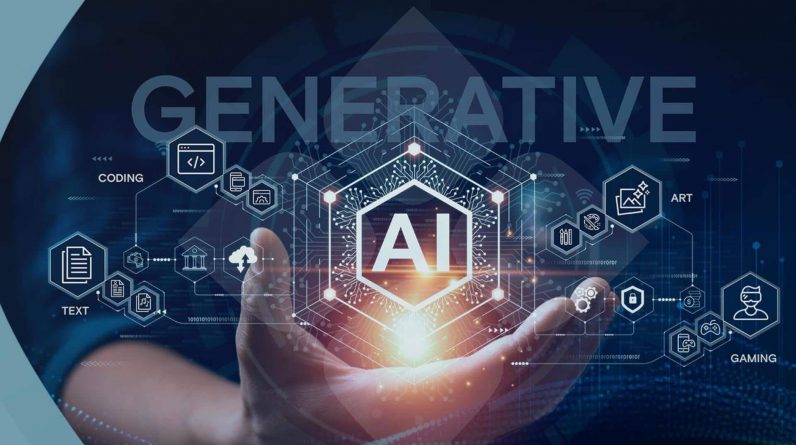This year, the marketing industry was turned upside down by generative AI. Most of the conversations started with whether or not it’s a good thing and quickly turned to “We better figure out how to embed this capability into everything marketing does.”
But gen AI didn’t monopolize the entire conversation. Marketers are still grappling with understanding who their buyers are, how and when to reach them, and what to say. Some things never seem to change. And that’s a good thing because if we aren’t obsessed with our buyers, why are we here?
So it doesn’t matter whether they’re initiating the contact or responding, it’s going to happen about 70% of the way through the journey. And the fact that everybody’s having that at the same time, it tells us very, very firmly that buyers decide when they interact, and they interact when they’re ready and not before, and you hounding them and calling them is not going to change when they respond.
Why? Companies have less direct impact on the buying decision than they think. Recent research shows buyers do all the leg work themselves with no direct contact with a prospective vendor until the 70% point in the buyer’s journey. Does that change everything marketing and sales do today? It certainly changes some things (and for the better). The key will be figuring out how to help buyers on their journey without the nagging requests for conversations they aren’t ready for.
Once you have that data, there’s just so much we can do to help leaders be successful in their roles. We’re focused on being indispensable assets to customers and a critical part of the decisions they make, whether they be buyers who purchase and consume the offerings, vendors that are crafting or refining their GTM, or investors making big decisions on where and how they direct funding.
Why? So, if buyers do all the research themselves, software marketplaces like G2 will continue to be essential sources of trusted information on products. But they are more than that. They can also be an important vendor resource to help them understand their buyers better and build the products they need.
Sometimes that means people are seeing a lot more tire kickers, sometimes that means that the ICP and the buyer personas and sort of jobs to be done have changed. But all those things, I think, shine a light more on the mid-funnel and the place where you really understand what’s going on in that sort of, you know, interest and consideration versus, say, awareness and action.
Why? Let’s talk about the middle of the funnel because it’s often ignored in marketing strategy – probably because it’s the hardest part to understand. However, it is most likely where buyers spend much of their time because they are in buying mode. They just aren’t ready to talk to sales (see #1 above). So much good information can be shared at this stage of the journey; it may be the most interesting place to work because it’s a mix of product-based content and content that supports roles and responsibilities – a little bit of everything.
A resource page is good; every website has some form of one. And that won’t change. But when trying to create highly relevant and personalized experiences, you need to drive people to something more. That’s where these curated web pages come into play. Destinations, as Frisch refers to them. And that’s why Uberflip is doubling down on supporting their creation.
Why? Uberflip is a great example of a company continually adapting its platform to support customers’ changing needs. From PDF generation to resource hubs to destination experiences, Uberflip has grown with its customers. It’s also a guide for how customers have evolved their research and learning processes and why paying attention to how customers research is so important.
We are not trying to be everything to everyone. We are trying to give, again, that signal first view, which inherently will make the dataset smaller than it would be if we said all contacts at that account in any buying committee, in any role, or we said all accounts, whether in your ICP or not. It’s very intentionally focused.
Why? Intent has gotten a bad rap over the last few years. People question if it’s really telling us who is in-market. However, identifying the best-fit accounts and knowing when those buying groups are active is critical. Terminus CMO Natalie Cunnigham says it’s less about intent than signals. We must understand which signals are key to which stage of the buyer journey and use that information to support buyers. It’s the new lead score, one that actually makes sense because it’s based on real data.
But it’s not just about creating content. It’s about creating good content that engages the audience. Because anyone can spin up the free version of ChatGPT and prompt it for content. Whether that content hits the mark is the question marketers need to know, and it would be nice to have some idea before that content goes live.
Why? Phrasee is a perfect example of how a technology vendor can leverage generative AI but still empower people to create the best experiences. Control over the final outputs will remain critical for marketers who want to truly differentiate their stories and products from the competition. But the added value that AI brings to the table is part of why they can maintain this control at scale. It’s an equal marriage.
‘We need to redefine the problem,’ De Datta suggested, similar to how Uber redefined the taxi industry. But there’s more to redefining the shopping experience than the mobile phone. Generative AI will enable us to design e-commerce experiences for the seeker by bringing a high-quality human experience to digital shopping.
Why? Bloomreach has had AI at its foundation from its beginning, but the capabilities it introduced using generative AI are fascinating. Generative AI enables a more conversational shopping experience right from the comfort of our couches. It’s like having a personal assistant supporting your shopping needs from start to finish and (for the smart sellers) beyond. Is this the future of B2C digital shopping? I’d buy that.
For me, it came from my inter-personal relationships and understanding that when I speak to someone, when I’m speaking to you, if I can think about the world from your perspective, instead of my own perspective, and frame the things that I am trying to accomplish, or the things I believe in, in a way that relates to something that you’re trying to solve for, I’ve always gotten better results, right? So that is on a personal level. If you extrapolate that to how you do that as a company, now you are a category-designing company. But I think that it can be done at any scale.
Why? When you think of building a category, what comes to mind? If you are in tech, you think of big categories like web content management, digital experience platforms, customer relationship management platforms, etc. Building a category takes years and requires a lot of money. Or does it? I’ve been fascinated with the idea of category design this year because it requires us to focus on problems and have a strong point of view that tells people we have the answer to their problems. It can be a niche category as long as it’s solving a problem in a unique way that people find compelling. If you have yet to consider category design, it’s worth researching.
Relevance is the key to breaking through. It’s about the right activities and the relevant actions to execute in those activities. It’s about the right conversations. And it’s about helping sales teams eliminate the busy work that keeps them from doing the right things.
Why? HubSpot made an important move when it acquired Clearbit this year. It’s a massive data play that brings critical buyer data directly into the HubSpot Customer Platform. It’s proof that we are once again shifting to the platform to ensure we have everything we need to engage, convert, and keep customers. Today, it’s called a go-to-market platform, and HubSpot is not the only one. But it’s certainly getting a lot of attention.
I think for this one, this is what we see all the time. It’s the most natural thing. It’s how we teach it, like the use case model. Look at the things you’re already doing. Find ways to do it more efficiently. It’s the fastest path to value creation in AI. But I think what we’re gonna start to see, and we’ve seen in the data moving year to year, is the leading companies, the ones who really become disruptors in their industry, are going to look at ways for AI to enhance creativity, decision making innovation, they’re going to look more at the acceleration of revenue side of this.
Why? We will be using AI in marketing. We are using AI in marketing. It’s the how and why that most are still trying to figure out. If you aren’t testing and thinking about where it can help the marketing team be more efficient and effective, you risk being left behind. And yes, keeping up to speed on the changes is incredibly hard, but ignoring it will be worse.







